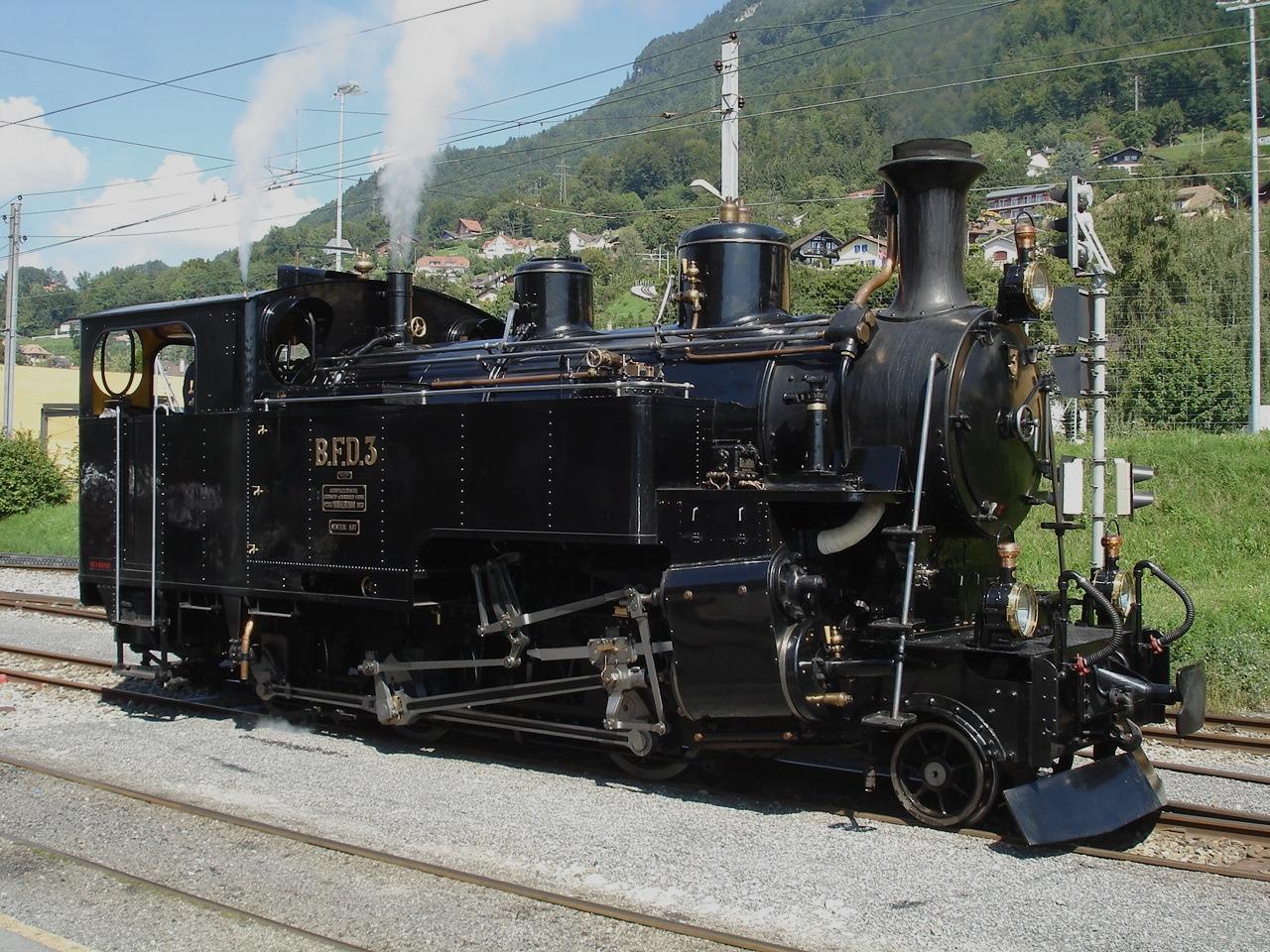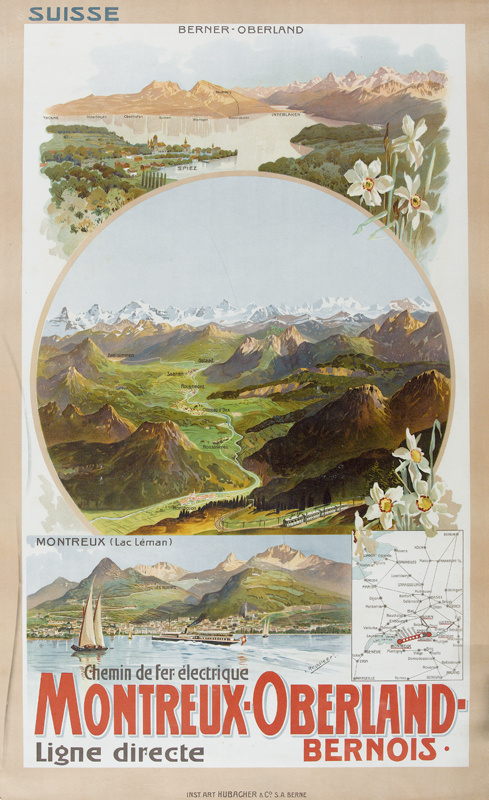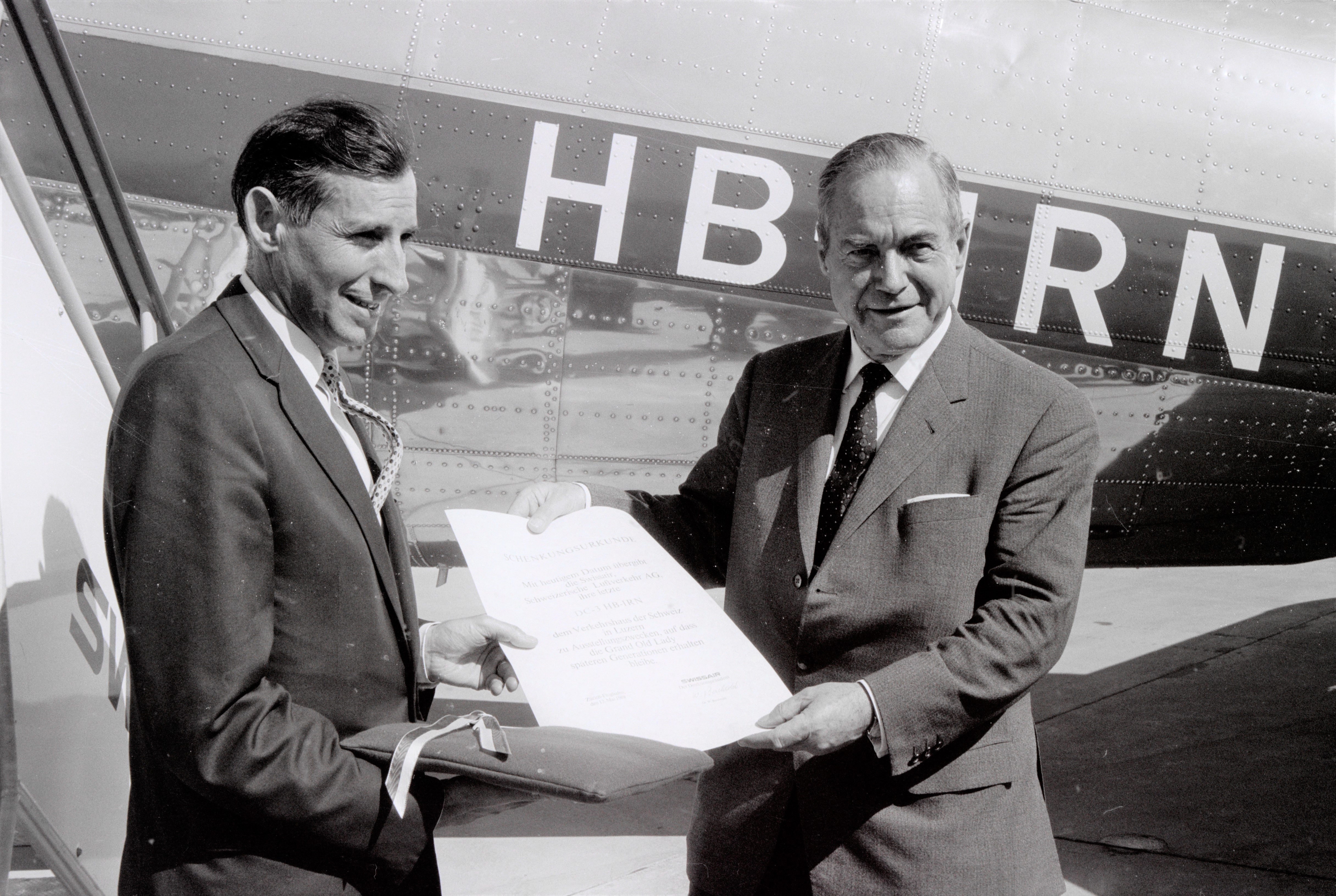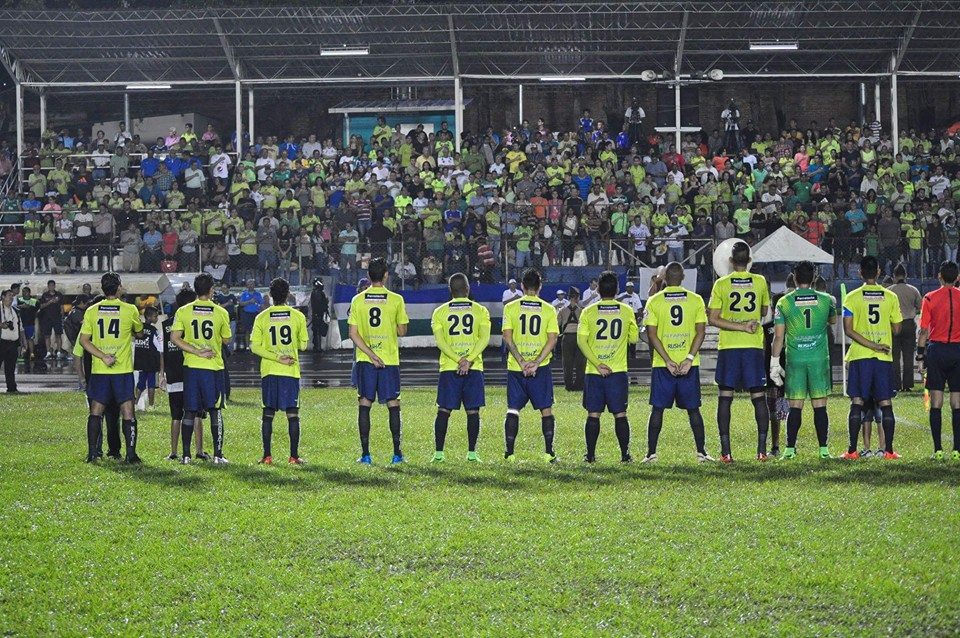|
Blonay–Chamby Museum Railway
The Blonay–Chamby Museum Railway (french: Chemin de fer-musée Blonay-Chamby, BC) is a short steep but adhesion worked metre gauge heritage railway operated as part of the Blonay–Chamby Railway Museum using vintage steam and electric locomotives and rolling stock. It uses the Blonay–Chamby railway line, originally built by the Chemins de fer électriques Veveysans. It is rail-connected at both ends, at its upper terminus, at Chamby Station on the Chemin de Fer Montreux Oberland Bernois line and at the lower end at Blonay station on the Vevey–Les Pléiades railway line line operated by Transports Montreux–Vevey–Riviera. History and aims The Blonay–Chamby Railway and Museum was opened in 1968 with the aims of operating the metre gauge railway line from Blonay to Chamby and in doing so preserving railway equipment of technical or historic value. For this purpose the Blonay–Chamby Railway built two motive power and carriage depots at Chaulin, a short distance ... [...More Info...] [...Related Items...] OR: [Wikipedia] [Google] [Baidu] |
Montreux-Oberland Bernois
The Montreux Oberland Bernois Railway (french: link=no, Chemin de fer Montreux Oberland Bernois, german: link=no, Montreux Berner Oberland Bahn, abbreviated MOB), is an electrified railway line that operates in southwest Switzerland. It is one of the oldest electric railways in the country. Its main line, in length, is built to the gauge. It connects Montreux, Gstaad, and Zweisimmen. At Zweisimmen, passengers may transfer to the Zweisimmen to Spiez line — a standard gauge line owned by BLS AG. A branch-line also connects Zweisimmen to Lenk. History and route The main line of the MOB was opened in stages, the first, from Montreux to Les Avants () on 17 December 1901, followed by the Les Avants to Montbovon () section on 1 October 1903. The next stages from Montbovon to Château-d'Œx () and then Gstaad () followed on 19 August 1904 and 20 December 1904 respectively, the final of the line reaching Zweisimmen on 6 July 1905. The spur line to Lenk was opened in 1912. Fro ... [...More Info...] [...Related Items...] OR: [Wikipedia] [Google] [Baidu] |
Swiss Transport Museum
The Swiss Museum of Transport or Verkehrshaus der Schweiz (literally "Transportation House of Switzerland") in Lucerne opened in July 1959 and exhibits all forms of transport including trains, automobiles, ships and aircraft as well as communication technology. It is Switzerland's most popular museum. The museum also maintains a large collection of work by Hans Erni, a local painter and sculptor. There are several other attractions in the museum besides the collection, including a planetarium, a large-format cinema and a 1:20,000 scale aerial photograph of Switzerland. History The museum traces its history to 1897, when the first attempts at creating a museum of railway equipment were made. Following a national exhibition in 1914, the Swiss Railway Museum was founded by Swiss Federal Railways in 1918 in Zurich. The concept eventually grew to encompass all transportation and, in 1942, the Swiss Museum of Transport association was established. Swiss Federal Railways was joined b ... [...More Info...] [...Related Items...] OR: [Wikipedia] [Google] [Baidu] |
Ferrocarril Económico De Olot á Gerona Locomotora De Vapor Número 23 En Suiza En 2010
Futbol Club Sonsonate is a Salvadoran professional football club based in Sonsonate, El Salvador. The club plays its home games at Estadio Anna Mercedes Campos, a stadium located in the City suburb of Sonsonate, Sonsonate, since 2009. The team is currently led by head coach Uruguayan Rubén da Silva. History On 9 September 2009, César Antonio Contreras and Miguel Antonio Castillo along with Pedro Antonio Contreras and with the support of the Sonsonate department (in particular the head of the department José Roberto Aquino) were able to re-activate Sonsonate from defunct status and begin their time in the modern era. The club competed in the Tercera División for a few years, before winning promotion to the Segunda División in 2011, under the direction of Ricardo Andrés Navarro. Despite strong club following and several finals appearances the club failed to win either the Segunda Division Apertura or Clausura title to achieve promotion in the Primera Division. However, ... [...More Info...] [...Related Items...] OR: [Wikipedia] [Google] [Baidu] |
Dixence Dam
__NOTOC__ The Grande Dixence Dam is a concrete gravity dam on the Dixence at the head of the Val d'Hérémence in the canton of Valais in Switzerland. At high, it is the tallest gravity dam in the world, sixth tallest dam overall, and the tallest dam in Europe. It is part of the Cleuson-Dixence Complex. With the primary purpose of hydroelectric power generation, the dam fuels four power stations, totaling the installed capacity to , generating approximately annually, enough to power 400,000 Swiss households. The dam withholds the Lac des Dix (Lake of Ten), its reservoir. With a surface area of 4 km², it is the second largest lake in Valais and the largest lake above 2,000 m in the Alps. The reservoir receives its water from four different pumping stations; the Z’Mutt, Stafel, Ferpècle and Arolla. At peak capacity, it contains approximately of water, with depths reaching up to . Construction on the dam began in 1950 and was completed in 1961, before officially comm ... [...More Info...] [...Related Items...] OR: [Wikipedia] [Google] [Baidu] |
LEB G 3/3 2 And 5
The Lausanne–Echallens–Bercher railway (LEB) G 3/3 2 and 5 is a two member class of metre gauge steam locomotive manufactured by Elsässische Maschinenbau-Gesellschaft Grafenstaden (EMBG) in the village Grafenstaden, entered in service 1888 and 1890. The weight in service is and the maximum speed is . The preserved example G 3/3 5 ''Bercher'' is operational on the Blonay–Chamby museum railway (BC) above Montreux at the Eastern end of Lake Geneva. No. 2 was named ''Échallens''. It was idled in 1920. Finding no buyer, it was scrapped in 1929. No. 5 was sold in 1934 to Energie Ouest Suisse (EOS) and was used to haul materials on the construction site of the Dixence Dam. In 1941, she was sold on to the Hilti construction company (nowadays called Hilti & Jehle, in the Austrian state of Vorarlberg). The Blonay–Chamby museum railway The Blonay–Chamby Museum Railway (french: Chemin de fer-musée Blonay-Chamby, BC) is a short steep but adhesion worked metre ga ... [...More Info...] [...Related Items...] OR: [Wikipedia] [Google] [Baidu] |
Blonay LEB G 3 3 5 Bercher 2015
Blonay () is a former municipality in the district of Riviera-Pays-d'Enhaut in the canton of Vaud in Switzerland. On 1 January 2022 the former municipalities of Blonay and Saint-Légier-La Chiésaz merged into the new municipality of Blonay - Saint-Légier. History Blonay is first mentioned in 861 as ''Blodennaco''. In 1108 it was mentioned as ''Bloniaco''. During the 13th Century it was known as ''Blonay'', ''Blonai'' and ''Blunai''. Geography Blonay has an area, , of . Of this area, or 33.2% is used for agricultural purposes, while or 46.1% is forested. Of the rest of the land, or 18.0% is settled (buildings or roads), or 0.4% is either rivers or lakes and or 2.0% is unproductive land.Swiss Federal Statistical Office-Land Use Statistics 2009 data ... [...More Info...] [...Related Items...] OR: [Wikipedia] [Google] [Baidu] |
Rack Railway
A rack railway (also rack-and-pinion railway, cog railway, or cogwheel railway) is a steep grade railway with a toothed rack rail, usually between the running rails. The trains are fitted with one or more cog wheels or pinions that mesh with this rack rail. This allows the trains to operate on steep grades above 10%, which is the maximum for friction-based rail. Most rack railways are mountain railways, although a few are transit railways or tramways built to overcome a steep gradient in an urban environment. The first cog railway was the Middleton Railway between Middleton and Leeds in West Yorkshire, England, United Kingdom, where the first commercially successful steam locomotive, ''Salamanca'', ran in 1812. This used a rack and pinion system designed and patented in 1811 by John Blenkinsop. The first mountain cog railway was the Mount Washington Cog Railway in the U.S. state of New Hampshire, which carried its first fare-paying passengers in 1868. The track was comple ... [...More Info...] [...Related Items...] OR: [Wikipedia] [Google] [Baidu] |






